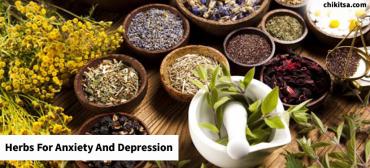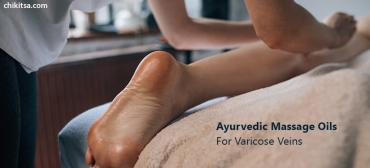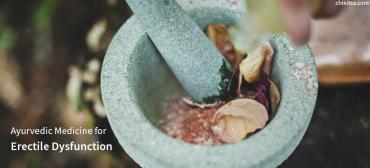The Celestial Knowledge of Ayurveda

It is not possible to say as to who was the founder of Science of Ayurveda. According to all authentic classic texts, the creator of Universe Lord Brahma first conceptualized Ayurveda. Lord Brahma looked into the agonies of human beings as well as the other animals and decided to cure them by the means and measure available on the earth.
This Knowledge of Curing the Illnesses or the Science of Life is Reported to have Passed Down the Line to Four Celestial Personalities in Following Order:
- From Lord Brahma - To Preservator Lord DakshaPrajapati
- From DakshaPrajapati - To Celestial Physicians Lord Ashwinou
- From Ashwinou - To Celestial king of clouds and heaven Lord Indra
- From Lord Indra - To human prodigies saintly physicians
Until the level of Lord Indra, there appears to be an agreement in the opinions of all major textbooks. Hereafter, Ayurveda appears to have descended through saintly physicians who disseminated the knowledge of their specialty subjects in their own ways for the welfare of humanity.
The reason to accept this theory is that the writers of all the three major textbooks write that their preceptors obtained the lessons of Ayurveda directly from Lord Indra. This makes us to infer that Lord Indra who could have been a great physician with divine powers and must have passed on the knowledge of different branches of Ayurveda on different occasions to different scholars. These scholars must have established their specialised schools of learning and in turn taught the same to their disciples.
Close Looks into the Revelations Made in Major Treatises are as Follows:
| TREATISE | PERIOD | SUBJECT | AUTHOR / PRECEPTOR | PREACHER |
| CharakSamhita | 1500 B.C | General Medicine | Agnivesha/ PunarvasuAtreya | INDRA |
| SushrutaSamhita | 1500 B.C. | Surgery and ENT eye | Sushruta / DivodasDhanvantari | INDRA |
| KashyapSamhita | 700 A.D. | Obstetrics., Gynaecology and Pediatrics | VruddhaVaghbhata / MarichiKashyap | INDRA |
Ayurveda holds the view that 'Health' is the foundation of all wisdom and the source of all the supreme objectives (Dharma, Artha, Kama and Moksha); apart from his body there is nothing that is of help to man here or hereafter. Ayurveda describes that one should follow the rules of good conduct and gives in detail the diet, activities behaviour and other means by which one can promote positive mental health. It is stated by Charak that following the path of Yoga and acquiring the true knowledge are the only ways of getting rid of all the pain, sorrows, and miseries i.e. attaining the state of Moksha, which is the ultimate aim of Ayurveda. It is also stated that the aim of Ayurveda is to see, that the man enjoys all the worldly pleasure i.e. Artha and Kama, by following the rules
One can get rid of the cycles of life and death and attain "Moksha" i.e. a state of eternal happiness and supreme knowledge by getting rid of all the desires, not expecting any fruits of action and acquiring true knowledge of self. At this particular stage, the individual realises that he is not represented by the body, sensory organ or mind, but by the soul principle i.e. Brahma, the trinity of eternity, knowledge and happiness. In other words after attaining Moksha, one gets rid of all the ignorance i.e. Avidya, which masks the true nature of Brahma.
LITERATURE OF AYURVEDA
BruhatTrayiTo impart Ayurvedic knowledge, many books came into existence, but out of these books, the main books fall into BruhatTrayi i.e. set of three major treatises of Ayurveda and LaghuTrayi i.e. set of three minor treatises of Ayurveda.
BruhatTrayi Comprises of the Following Treatises
1. CharakSamhita, which mainly deals with the medical part of Ayurveda
2. SushrutSamhita, which mainly deals with the surgical part of Ayurveda
3. AshtangSamgraha and AshtangHruday, which are basically compilation of the above two treatises.
One significant point, which needs a mention out here is that one very important treatise, named KashyapSamhita, which deals with the gynaecological and paediatric part of Ayurvedic medicine is not included under the above heading of Bruhattrayi.
Kashyap-Samhita
This work, which is ascribed by Kashyap, resembles CharakSamhitain style, divisions, and approach.
It is in eight divisions and has two hundred chapters. This work is also known as Vruddha-JeevakeeyaTantra. The work mainly deals with midwifery, gynaecology, and diseases of children. It is said here that of eight divisions of Ayurveda, paediatrics is the best Rickets is dealt with in some detail, and is explained as caused by drinking the mother's milk which is vitiated by Kapha. The welfare of the newborn child is said to be secured by worshipping Shashti (the six-faced divinity of the sixth day of lunar month, presiding over the health of infants.)
1) CharakSamhita (1500-1000 B.C.)
It is considered to be the earliest medical treatise in India. It deals with different aspects of disease and treatments. It has served as the foundational work for all subsequent medical literature and practice.
This work is composed by Agnivesha based on the teachings of the sage Punarvasu, as Tantra redacted by Charak and Drudhabala. Atreya had six students, among whom Agnivesha was one. Each of these six wrote a treatise, but Agnivesha's work served as the source book for this Samhita.
CharakSamhita is in eight divisions or Sthanas and each bears a descriptive title. It is an extensive work, and its volume exceeds that of its celebrated companion, SushrutSamhita, although the surgical matter is entirely left out in the former.
The Eight Divisions are:
- Sutra Sthana - This is the most important Sthana of all the divisions, and deals with the entire subject -matter in a synoptically manner.
- NidanaSthana - deals with general pathology of eight major diseases. Each chapter furnishes details concerning the disease - types, causation and manifestation of diseases and diagnostic aids.
- Vimana-Sthana - deals with miscellaneous matter; chemistry and physiology of Rasa, and matters pertaining to medical education.
- Shareer-Sthana - deals with general human constitutions progeny, pregnancy, foetal development, growth, physiological framework, life and death. It also enumerates the anatomical parts of the body, and in the last chapter we find an account of midwifery.
- Indriya-Sthana - deals mainly with symptomatological diagnosis and prognosis. The ascertainment of the approach of death by various signs and symptoms is described.
- Chikitsa-Sthana - is the most valuable division for the practising physician as it contains numerous drug formulae and prescriptions for long and healthy life, details concerning rejuvenation and virilification.
- Kalpa-Sthana - is the division that deals with the formulae (especially for emesis and purgation), and pharmacy.
- Siddhi-Sthana - deals with the methods of effective treatment, especially, with the classical Panchkarma.
The work elaborately discusses the physiology of the three Doshas, human anatomy, diagnosis, and prognosis of diseases, foetal growth during the months, and medical education.
2) SushrutSamhita (1000 B.C.)
It was one of the four treatises regarded as the source books for the branch of surgery and for all the later surgical work in India. The extant SushrutSamhita has three layers, the original treatise by the 'elder' Sushrut, the later recasting Sushrut, and still later additions and amendments by Nagarjuna.
While the first five books deal almost extensively with surgery, the last book (supplementary) is designed to deal briefly with the other six branches of Ayurveda leaving out toxicology. Interesting aspects of this book which can be called the 'First Principles' are the introduction to Medical science (especially surgery), medical education and training, the theory of therapeutic substances and dietetics.
An interesting and intriguing detail to be found in this book is the suggestion that loud sounds of the drum smeared with antidotes are capable of destroying poisonous germs that float in air.
3) AshtangaSamgraha (100 A.D.)
This is a voluminous and comprehensive medical treatise, included in the 'Big Three' of Indian medicine, the other two being CharakSamhita and SushrutSamhita. It is prepared by Vagbhata, reffered to as Vruddha -Vagbhata on this account. The work which proposes to deal with the eight divisions of Medicine is in six books and one hundred and fifty chapters.
The work of this book is a compilation (Samgraha) of information, explanations, and prescriptions to be found in CharakSamhita and SushrutSamhita. There is little that can be described as original. But the value of the work is undoubtedly great, for it has neatly collected the essential details from the two classics, which are too extent, rambling and discursive.
The work has prose passages interspersed with verses, the latter to be met with also in AstangHrudayaalmost in exact correspondence.
LaghuTrayi
It comprises of following treatises :1) BhavaPrakash, which deals with the matter concerned with the medicine and also with the drugs.
2) MadhavNidan, which deals mainly with the diagnosis of the diseases.
3) SharangdharSamhita which deals mainly with medicine information and formulae. The treatises which are included under this heading has a great educational value, but since they are not as big or not as elaborate as the three treatises falling under the heading of BruhatTrayi, they are termed as LaghuTrayi.
1) BhavaPrakash (14th Century A.D.)
This is a standard medical textbook written by Bhava-Mishra. It is an elaborate treatise in three books (Khandas) dealing with all matters pertaining to medicine, on the triple basis of causes, symptoms and cure (Hetu-linga-Aushadha).
Book I (Purva -Khanda) is in two parts (Bhaga) and six sections (Prakarana). The first part, which is extensive, encompasses the origin of medicine creation and evolution, embryology, paediatrics, anatomy and physiology (following CS and SS), dietetics and pharmacology. It also deals with the practice of healthy habits during the day and in different seasons. A glossary of drugs is included here. The second part describes the medical terminology and measures, the five treatment procedures (Pancha Karma), cleaning and other methods relating to metals.
Book II (Madhya-Khanda) is in four parts, dealing with cures of specific diseases. An excellent account of pathology and therapeutics is to be found here.
Book III (UttaraKhanda) is exceedingly short. It deals with elixirs and restoration of youth.
Largely it repeats earlier accounts and formulae but the lists of diseases and cures have been updated. For instance, there is mention of 'Phiranga' (a Sanskrit term referring to a foreigner), or syphilis, which spread in India owing to veneral contact with Portuguese adventurers likewise Soma-roga, a disease of women, not mentioned by Madhava, has been described with its psychosomatic involvements.
The pharmacological supplement to Bhav-Mishra's celebrated work BhavaPrakash, has been counted among the 'minor three classics' of Indian medicine (the other two being Chakradatta or Madhav-nidana andSharangdhar-Samhita). While the main text BhavaPrakash follows Sharangdhar-Samhita, the 'Nighantu' - portion follows Madan-vinod.
2) Madhava-Nidana (15th Century A.D.)
This is a popular and comprehensive work on pathology. It has been an indispensable aid to physicians for over a thousand years. There is a saying that this work is supreme in the field of pathology. The real title of work is Roga-vinischaya.
The work is an elaborate consideration of causes, symptoms, complications and treatments in seventy three sections.
It can be seen that the work draws heavily from CharakSamhita and SushrutSamhita.
3) SharangdharSamhita (14th, 15th century A.D.)
The topics covered are general considerations of health, illness and treatment, anatomy and embryology, terminology, treatment procedures like oleation, sudation, emesis, purgation and so on, preparation of food, articles of food, cooks and kitchen; proper conduct during day and night and in seasons; materiamedica; medical uses of metals and mercury ; clinical examination, curability or otherwise of diseases; manner of taking medicine; diagnosis , symptoms and treatment of specific diseases; and the treatment of diseases in general. Many Unani prescriptions are included in this book.
This is a short but solid textbook of medical information and formulae, much relied upon by later physicians. The text deals with terminology, weights and measures, time for taking medicine, pulse examination, anatomy, physiology, preparation of medicines, curative procedures etc.
The use of pulse-examination in diagnosis appears here for the first time in medical literature. This is the oldest work in which metallurgical techniques are dealt with.
Other Authentic Works
Along with the above treatises, some other books also came into existence, which are equally important for a physician to treat the diseases. These are as follows:
- BruhadyogaTarangini (16th century)
- Chakradatta
- DravyaGunaSamgraha
- GadaNigraha
- HaritaSamhita
- Jalpa-Kalpa-Taru
- Rasa- HrudayaTantra
- Rasa-RatnaSamucchaya
- Rasa-Ratnakara
- RasendraChudamani
- Rasendra-Mangala
- Yoga Ratnakara
“NIGHANTU†Ayurvedic Pharmacology Special Texts
Indispensable equipment for the practicing physician is an intimate acquaintance with the Nighantu. Nighantu is vocabulary, glossary, and a collection of names. Many great Acharyas contributed to the formation of various Nighantus. These are:
- Madana Pala Nighantu
- Raja-Nighantu
- ShodhalaNighantu
- Bruhat-Nighantu-Ratnakara
- DhanvantariNighantu
- Bhava -PrakashNighantu
- KaiyadevNighantu










